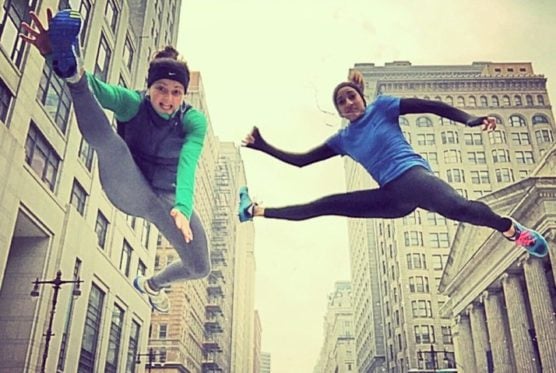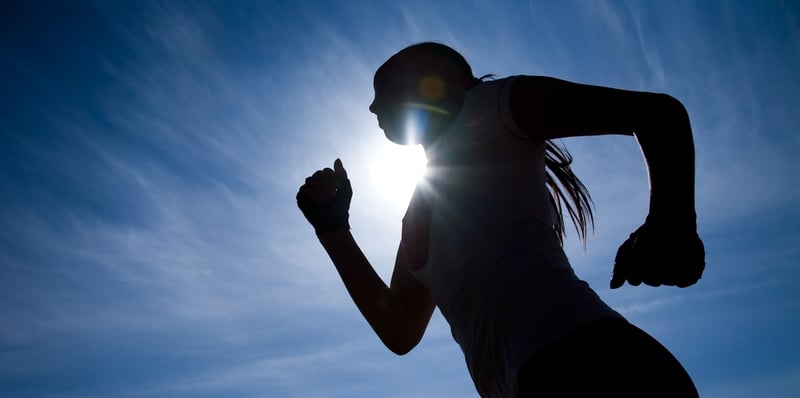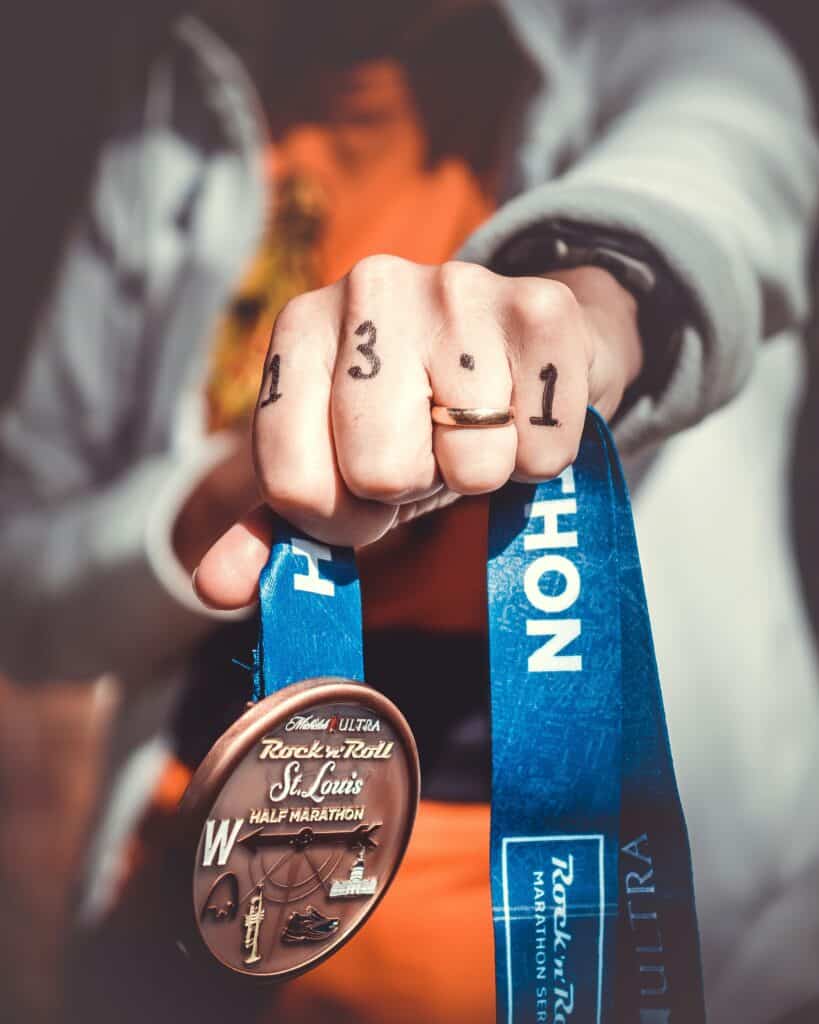
1) Dress for a difference of 20°F. If you are comfortable standing outside, you probably have too many layers on. This often takes a bit of adjusting depending on personal preference.
2) Warm up before going outside. Do 5 minutes worth of dynamic exercises such as jumping jacks or legs swings.
3) Adjust your paces. Know that a workout in 50°F will feel much easier than one in 5°F. Just as heat and humidity can slow you down in the summer, the cold can make faster paces much more difficult.
4) Meet a partner (or several). Having someone to run with in the cold is not only great for accountability, but it will increase your safety.
5) Wait until daylight. Some people won’t have the choice, but if you do have the option to even run a few miles on either side of sunrise or sunset, the cold can be slightly more tolerable.
6) If you are forced to run in the dark most days, be safe about it. Run with friends, wear a brightly colored jacket or reflective vest, use a headlamp with a forward and backward facing light, and be alert.
7) Keep hydrated if running more than 45 minutes. Use an insulated sleeve with a single-use warmer such as HotHands® to keep your liquid from freezing. Blow into your hydration tube after drinking and/or keep your hydration vest under a layer or two to keep it from freezing.
8) Depending on footing conditions, you might want to wear trail shoes, YakTrax®, or modify a pair of shoes with hex head screws. Ice can be incredibly dangerous for runners of all abilities so seek out cleared routes whenever possible.
9) Check the forecast and adjust your training schedule. Fast workouts should be done on warmer days when possible. Save the worst weather days for recovery runs or better yet, rest days!
10) Wear mittens instead of gloves. Try a pair of latex or nitrile gloves as a base layer to keep moisture out and warmth inside.
11) Use HotHands® for your extremities – they are wonderful tucked inside your mittens.
12) A carefully planned route can involve a quick warm-up using the hand driers in public restrooms.
13) Wear a base layer such Smartwool® to keep moisture at bay once you start sweating.
14) Use a balaclava instead of just a hat. You can always pair another hat or hood on top, but the balaclava gives you face protection as well.
15) Speaking of face protection, all those wonderful products you use for chafe such as Body Glide® or Vaseline® are also useful to prevent chapped skin on the cheeks and lips.
16) Make it easier on yourself. If possible, run into the wind when beginning your workout and finish with the wind at your back.
17) Wear a rain jacket. If you are facing precipitation, wear a rain jacket as your outermost layer — preferably something with a hood to keep any moisture from getting inside.
18) Pair shorts over your running tights and a vest over your top to keep your core areas warm.
19) Have a warm set of clothes to change into immediately after your run. Even if it means extra laundry, it is worth it as your body temperature will drop quickly after your heart rate slows down.
20) Be smart. If the conditions are dangerous, take your run indoors to a treadmill or indoor track. Plenty of gyms offer single day passes.
Carissa Liebowitz has run the Boston Marathon as well as dozens of marathons and half marathons. You can follow her running adventures on Strava, Instagram and her blog.





